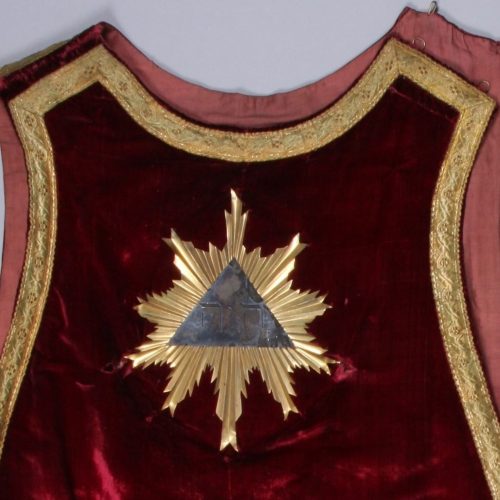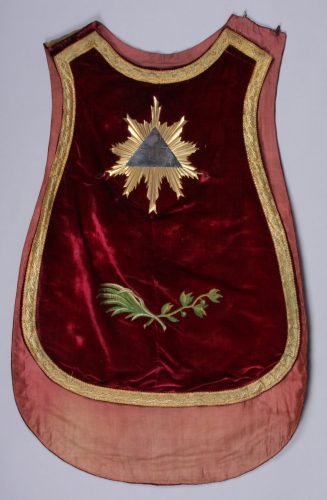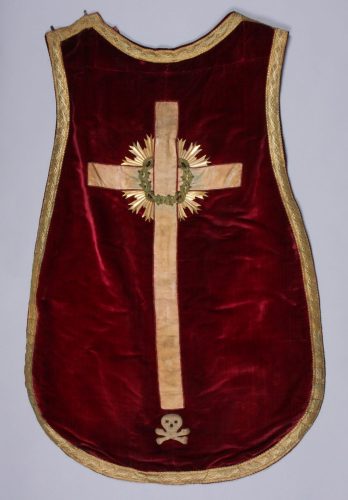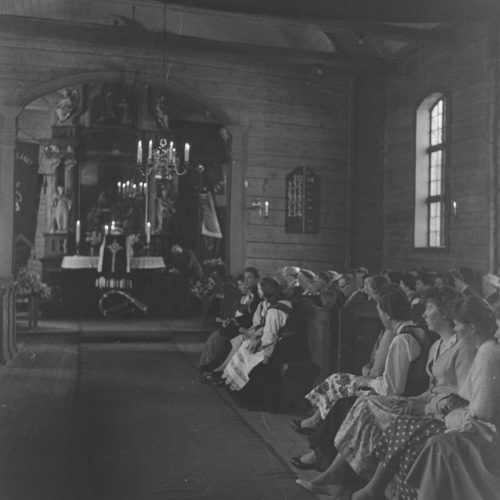Chasuble from St Jørgen’s Church

The design, colour, shape and motif of ecclesiastical textiles are often symbolic. This chasuble from St, Jørgen’s Church is made of red velvet and has a wide gold band along its edges.
The motif on the front is a triangular metal plate with the word ‘GOD’ written in Hebrew, with gold rays emanating from the plate. Beneath it are two crossed branches. One is a branch from an olive tree, symbolising peace and harmony. The other is a palm branch, a reference to the story of Jesus riding into Jerusalem on a donkey, being hailed by people waving and laying palm leaves in the road in front of him.

The chasuble is made up of a back piece and a front piece that are sewn together on one shoulder, and with hooks on the other. The back piece is slightly longer than the front piece.
There is a large gold cross on the back, with Jesus’s crown of thorns hanging on the cross. Under the cross there is a skull with two crossed bones, symbolising Jesus overcoming death.

We don’t know much about this chasuble or any others that have been used in St. Jørgen’s Church. Liturgical clothing often has a long history, where the various garments have changed both shape and colour over the centuries. The materials and decoration used have also varied.
Like all garments, they became worn and had to be repaired, which may have altered their shape. For example, bands, motifs and borders on the neck and over the shoulders strengthened the seams and hid repairs.
An inventory list from the accounts of St. Jørgen’s Hospital in 1751 lists two chasubles: one of velvet and one of damask that was deemed unusable!

Photo: Gustav Brosing. The University of Bergen Library.



